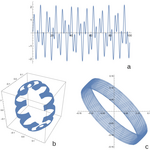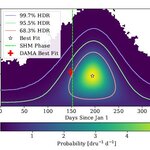Physics

One of the constant things that one encounters in the world of science is idealization. Nevis Laboratories define physics as the study of matter and energy. It's supposed to be a guide to the world around us. Physicists create experiments to see the outcomes of certain activities. However, the world is a messy and complicated place. When physicists explain a particular phenomenon, they simplify the complex forces that interact with physical bodies into something understandable. To do this, they often employ idealizations, which remove the negligible parts of the interaction. But does…

The neutron, discovered in 1932 by Chadwick, is a fascinating particle whose existence allows for the stability of heavy nuclei and a wealth of atoms of different properties. Without neutrons, Hydrogen would be the only stable element: protons cannot be brought together and bound in a stable system, so e.g. Helium-2 (an atom made of two protons with two electrons) is very short-lived, as are atoms with more protons and no neutrons. So our Universe would be a very dull place.
Neutrons provide stability to nuclei containing two or more protons because they attract protons by the strong…

A theory of everything has been the Holy Grail of some of the greatest physicists of the last century, from Albert Einstein to Stephen Hawking. A theory of everything, a single, all-encompassing theoretical framework which would be able to explain, coherently explain and link together all the physical aspects of the universe, from the atomic scale to galaxies, from the choppiness of the quantum world to the smoothness of relativity. The motive for a theory of relativity is simple: the standard model and general relativity tells us very different things about the ontology of reality. Albert…

A couple of weeks ago Derrick Muller of the YouTube Channel Veritasium made a video asserting that the electrical energy in a circuit does not flow through the wires but through the fields. This is true and yet also a misleading misconception. This misconception in his problem arises because it deals with a circuit loop that reaches from the Earth to the Moon and back with a one-meter gap between the wires. He also uses a definition of the light being “on” which seems to be having any minuscule amount of current flow through the bulb. Then he justifies this will…

Interference is a fascinating effect, and one which can be observed in a wide variety of physical systems - any system that involves the propagation of waves from different sources. We can observe interference between waves in the sea or in a lake, or even in our bathtub; we can hear the effect of interference between sound waves; or we can observe the fascinating patterns created by interference effects in light propagation. In addition to all that, we observe interference between the amplitudes of quantum phenomena by studying particle physics processes.
The "grandma-level" explanation of…

A bit over a half into my course of particle physics for Masters students in Statistical Sciences I usually find myself describing the CMS detector in some detail, and that is what happened last week. The course
My course has a duration of 64 hours, and is structured in four parts. In the first part, which usually takes about 24 hours to complete, I go over the most relevant part of 20th Century physics. We start from the old quantum theory and then we look at special relativity, the fundaments of quantum mechanics, the theory of scattering, the study of hadrons and the symmetries that…

One of the strongest results that Astronomy can produce is an image, a picture of a distant natural event we would never otherwise know about. Gravitational wave astronomy, however, focuses on just detecting gravitational waves. Each detector, which must be large, detects the equivalent of one pixel of gravitational wave. With two detectors we can verify that we have detected the waves and triangulate direction, with three or more we can do this better and better. Currently LIGO can and does produce images which show the probable location of the event that causes the gravitational waves on…

Do you remember the DAMA-LIBRA experiment? It is a underground detector made of sodium iodide crystals buried under the rock of the Gran Sasso mountain in central Italy, which took data for over a decade in the search of the elusive signal that slowly-moving, massive particles would produce when they bounced off atoms of the active detector material.
The idea behind the experiment is really nice, and in fact over the past thirty years it was exploited by several different instruments, which unlike DAMA-LIBRA all reported negative results (with one exception which soon turned out to be a…

The title of this post is the same of a non-technical presentation I gave today at the 2021 USERN Congress. The USERN (Universal Scientific and Education Research Network) is an organization fostering the diffusion of science, which provides prizes to researchers who distinguish themselves for their scientific advancements, and strives for science across borders. As a member of its advisory board I was invited to give a presentation in the first session of the virtual congress, which deals with human versus artificial intelligence.Having only 20 minutes to say something meaningful, I decided…

In the next few days I have a busy schedule with a few lectures gravitating around the use of deep learning technologies for fundamental physics research. This is of course no news, but I thought that my blog is the proper place to list a few pointers, in case some of you is interested in following one or two of these events. After all, deep learning is all the rage these days, and even if fundamental physics is not your bread and butter, you may hopefully find useful inspiration in the kind of use cases that field provides for cutting edge applications of artificial intelligence.
The first…